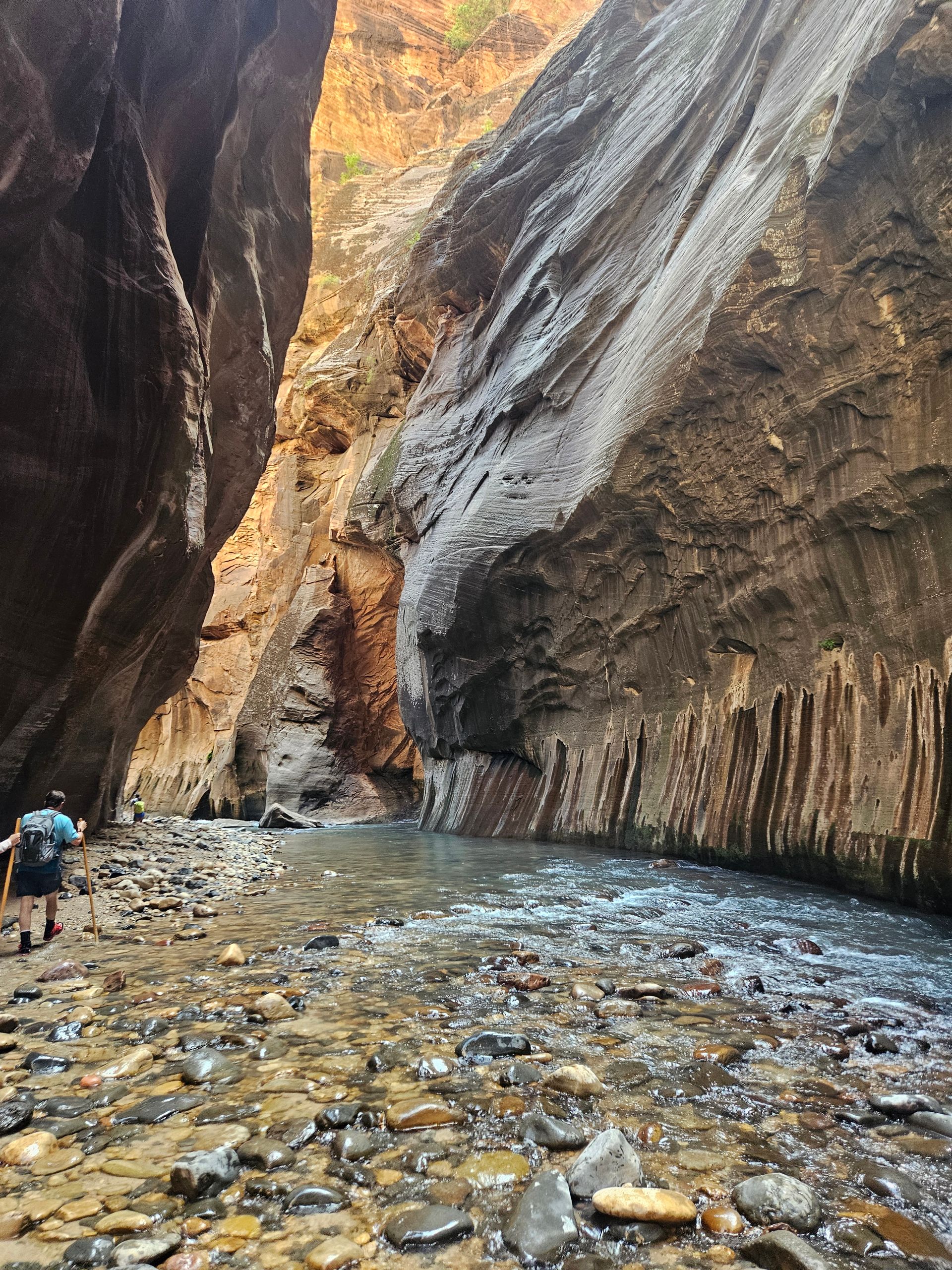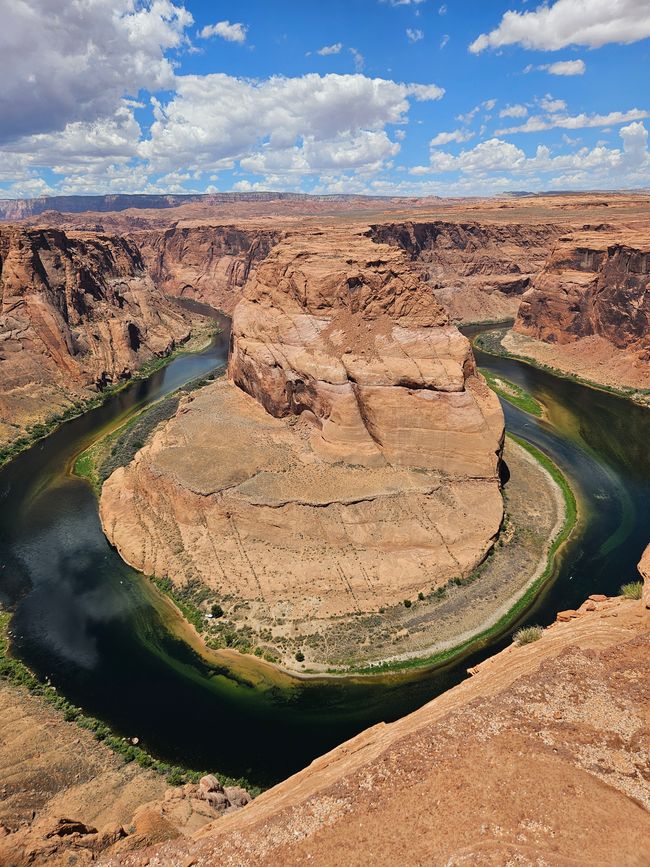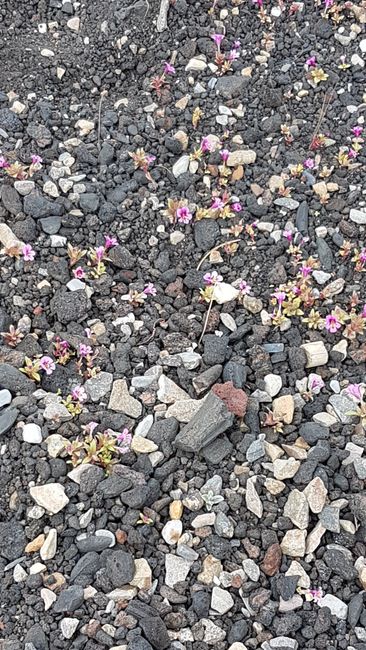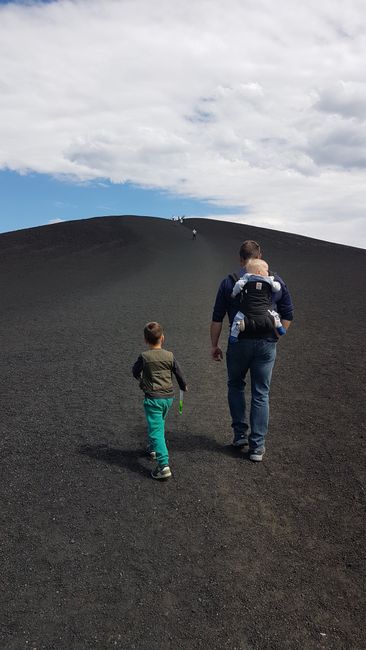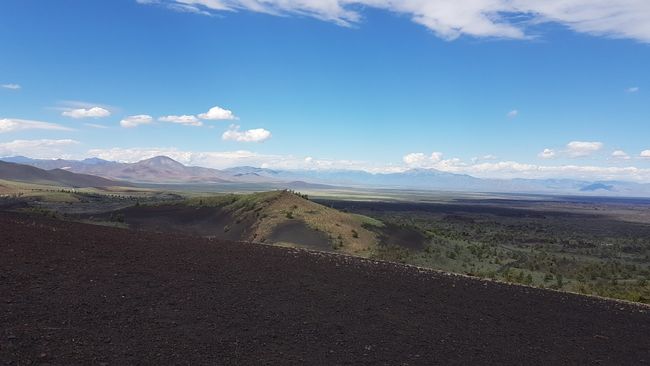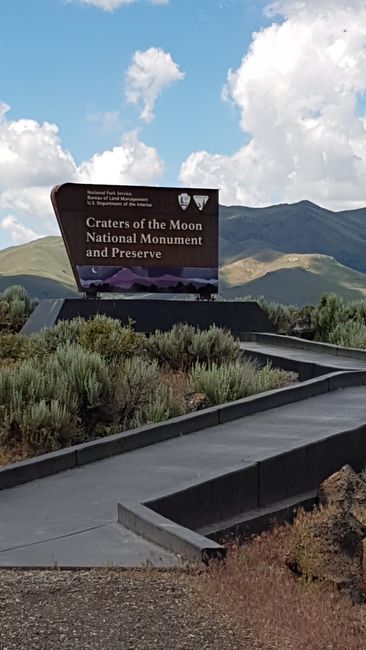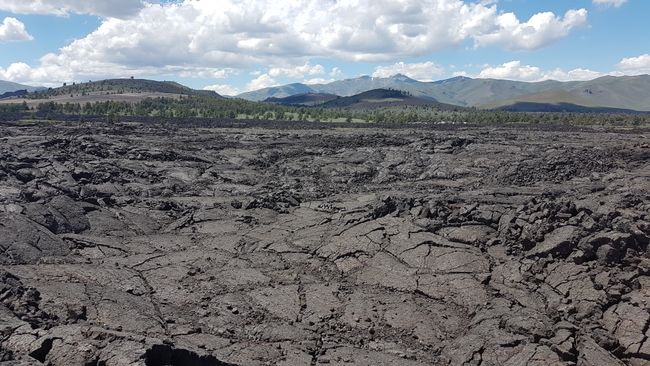Day 14: Craters of the Moon
Опубликовано: 17.06.2018
Подписаться на новостную рассылку
After emptying and refilling our tanks and cleaning the car from the inside, we leave Idaho Falls with the goal of reaching Craters of the Moon. The distance is 90 miles long and takes 1 1/2 hours. The landscape becomes increasingly barren and there are hardly any places around. For a long time, the road leads through government areas. Entering forbidden land. The name suggests a research station. Who knows what is being researched here. Rene's imagination runs wild, he thinks of the movie Terminator.
At noon, we reach the Craters of the Moon National Park. The Moon Crater is a massive lava sea with islands of volcanic cinder cones and sagebrush. The lava landscape was formed by the regularly recurring eruptions of the so-called Great Rift, a chain of cracks and fissures that runs 100 km from north to south through the park. A series of eruptions, similar to those seen in Hawaii, have produced lava tubes, cinder cones, and various types of lava flows over the past 15,000 years, which can be seen and visited on the 11 km long circular path.
First, we secure a campsite. Then we gather information at the visitor center and start the scenic drive along the 11 km long loop. There are also caves here. Small ones, not as massive as in the Lewis and Clark Caravan State Park. We obtain permission from the ranger to visit these caves. There is an asphalt road that leads right through the lava landscape. We descend into the cave. There are metal steps at first, then large sturdy steps. We walk for a few meters and then there is another hole leading outside, but not for leaving. We have to turn back. If you want to be exact, it is more like a tunnel than a cave. There are other caves on the other side as well. We choose a second one. Here too, we go down with larger unstable stones, and after a few steps, it gets really dark. We have flashlights, but they don't provide good visibility. So we turn around pretty quickly. The path is maybe 2 km long and we drive to the next point. It is the Inferno Cone, a summit of a cone that can be reached by a short, 70 m but steep ascent. We walk on fine lava sand and reach the top in 10 minutes and look at the entire surroundings. All ash cones in the region can be seen. The ascent and descent can be easily done without much effort. Then, at the next point, there are 2 mini volcanoes to see. You can walk all the way around for a view of the crater. There is even snow in one of them. Lastly, we hike a 800-meter circular path through fragments of lava that sit like islands in a sea of ash deposits. It is astonishing that despite the infertile lava stone, many plants and animals live here. Only 42 cm of precipitation falls annually, mostly as snow in winter. So we see many delicate flowers on the ground and animals like chipmunks, squirrels, marmots, Mountain Bluebird, etc. Deer also live here, but we couldn't see any. There are frequent signs stating that people destroy nature by deviating from the trails and thus damaging the rock. Unfortunately, visitors do not take this as a warning, and so we often witness others leaving the trails. It's a pity that not everyone respects the environment. We finish our hikes and scenic drive at the campsite. I fill out the Junior Park Ranger program with Erik and then Erik is appointed Junior Park Ranger at the visitor center. Then we have dinner on the moon. The park offers a children's program at 8 o'clock, but since it is conducted in English, we do not participate, and David cannot stay alone.
That's how we explain nature to Erik.
Подписаться на новостную рассылку
Отвечать (2)
Regina
Da waren wir auch, Wie heißen noch die Lava- Formationen?Susanne
Die Blume ist eine Gauklerblume oder auch Affenblume. Sehr hübsch.